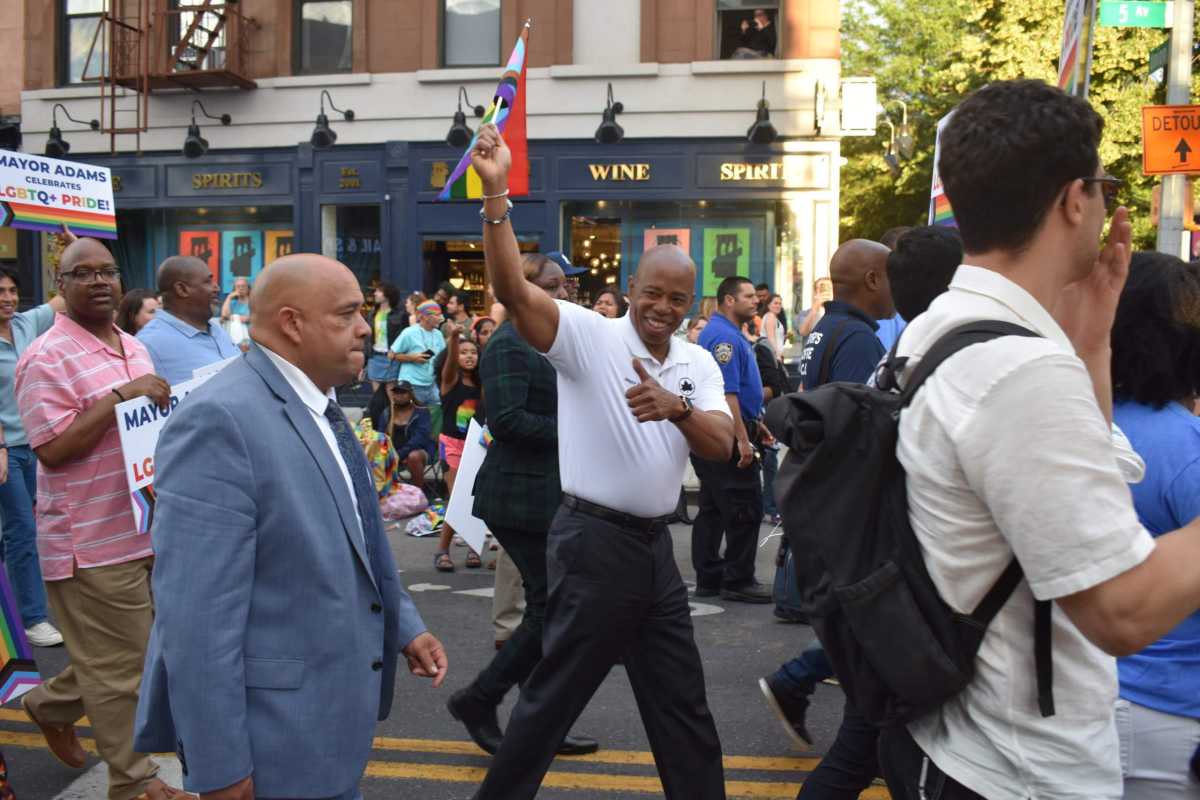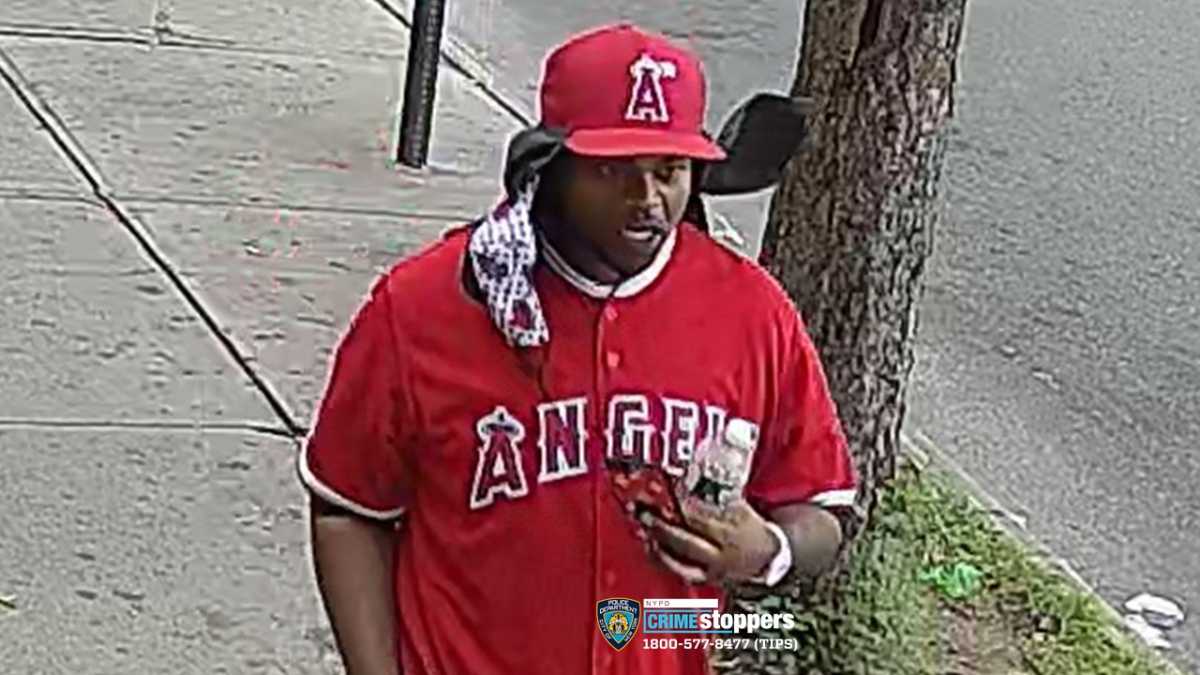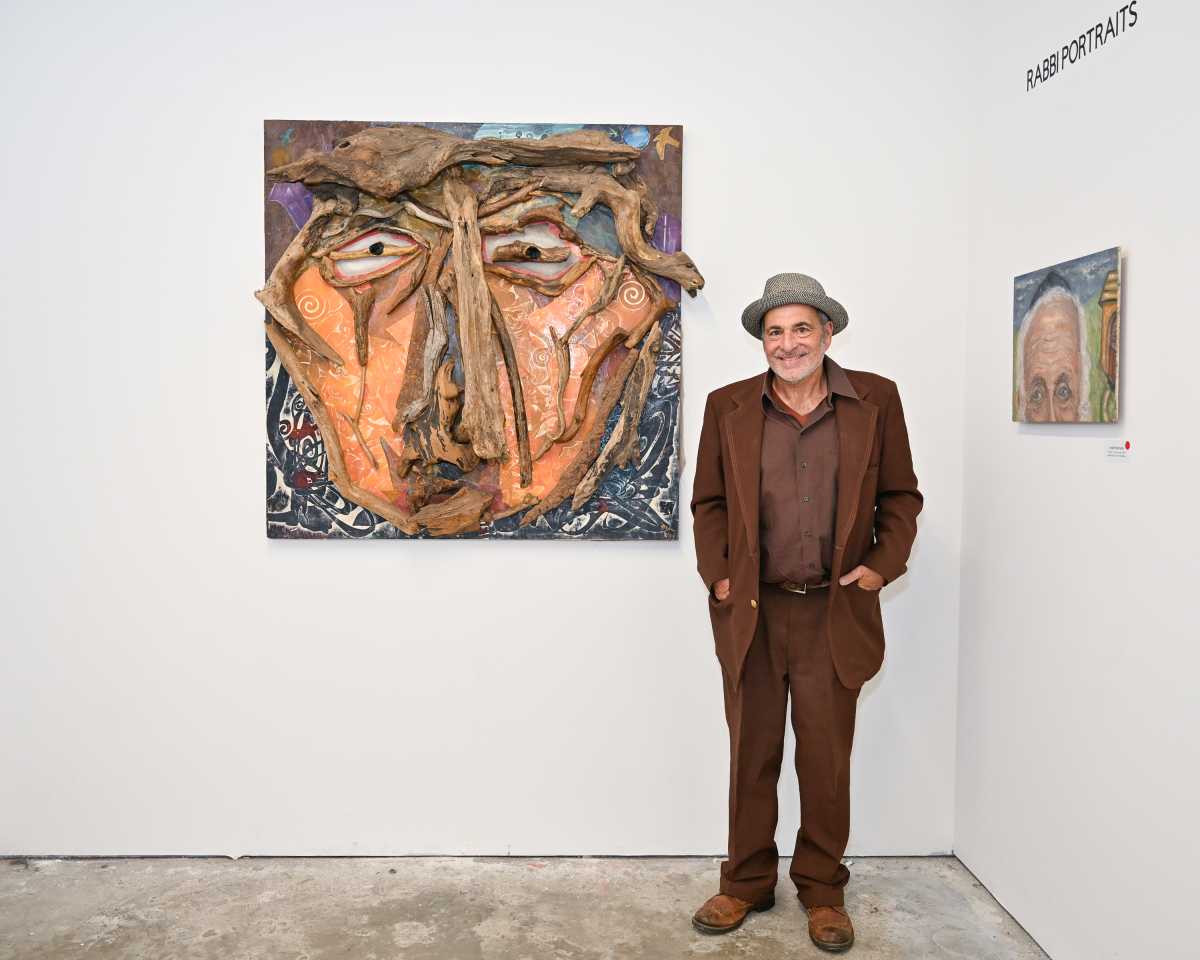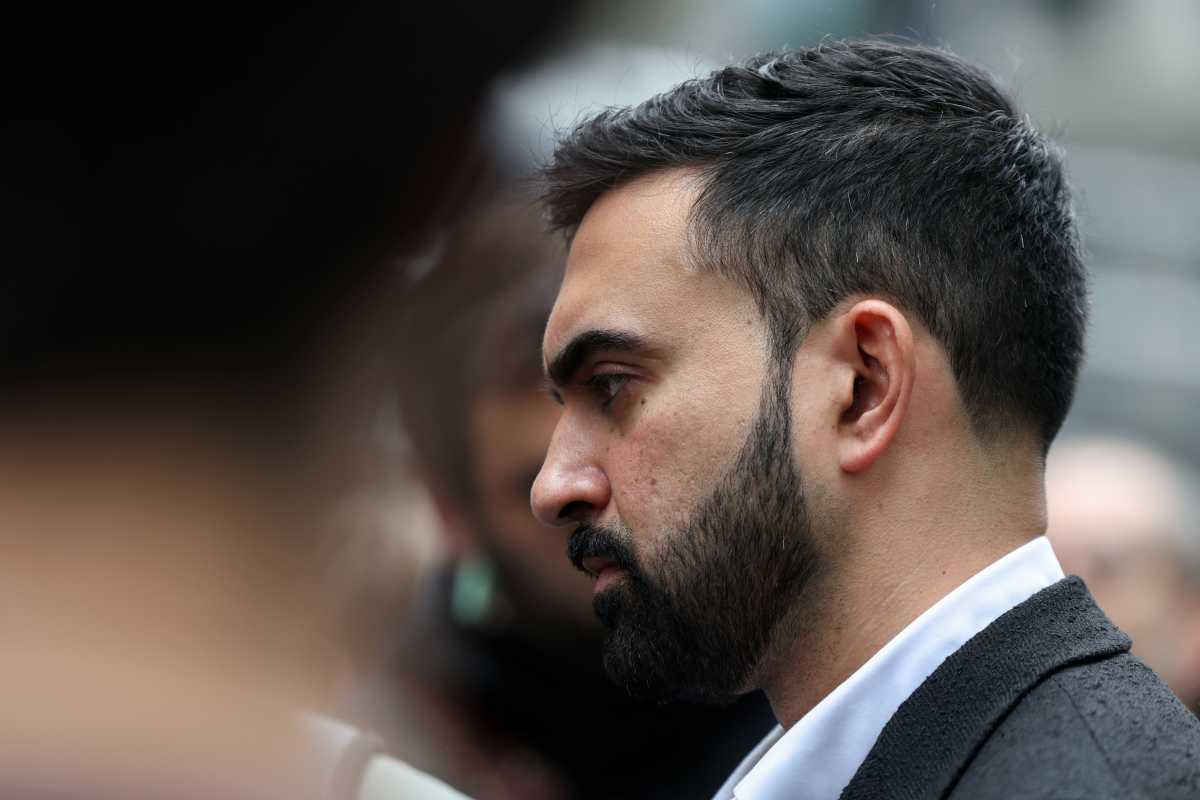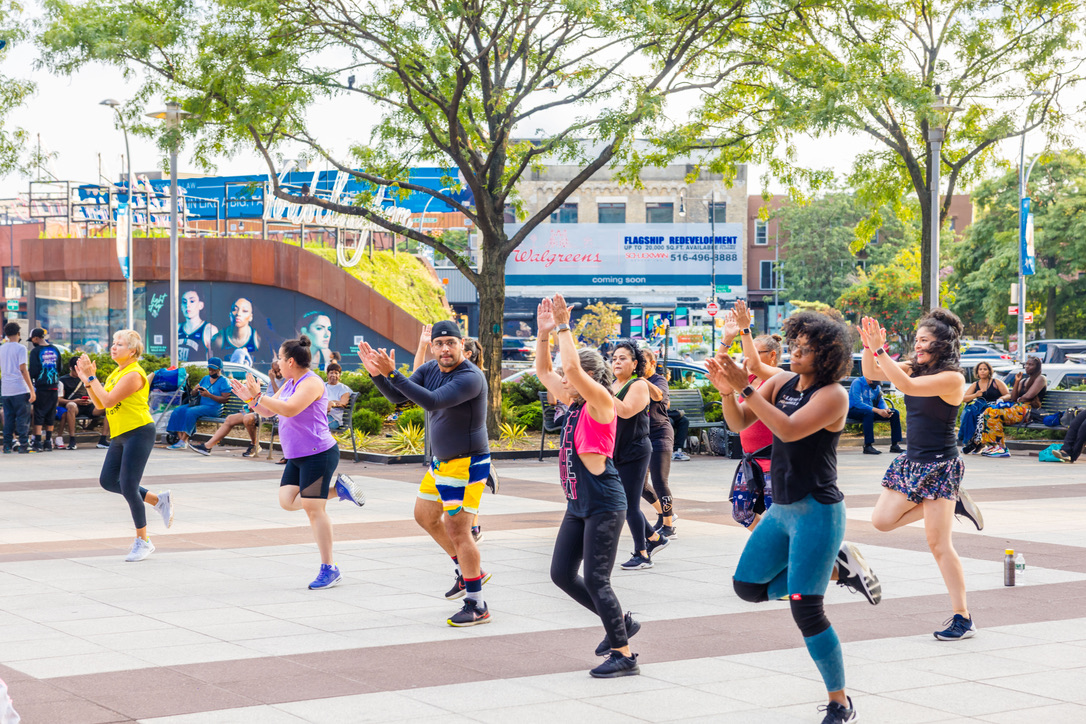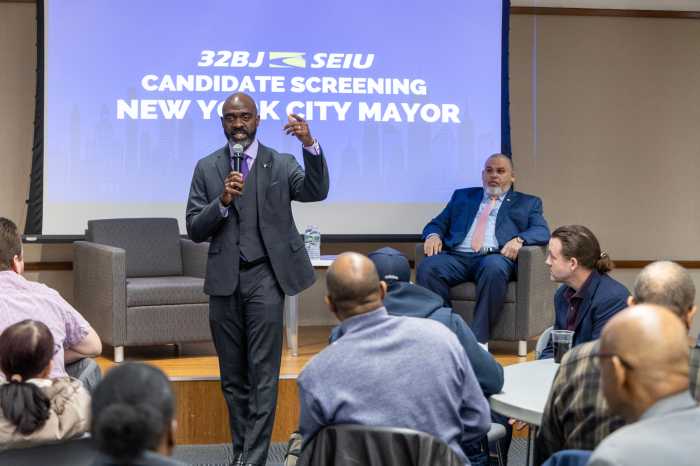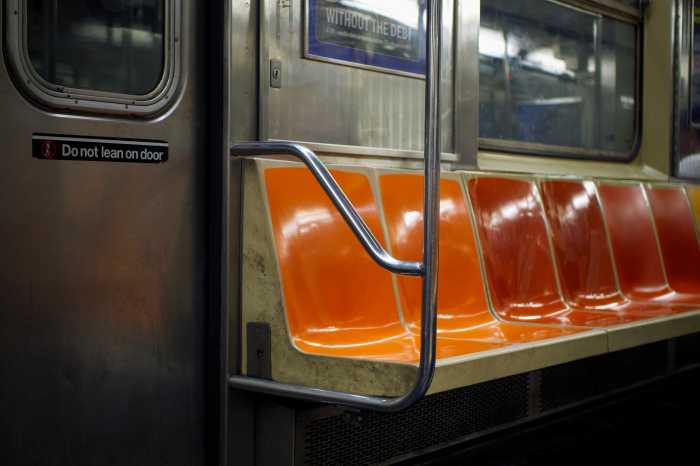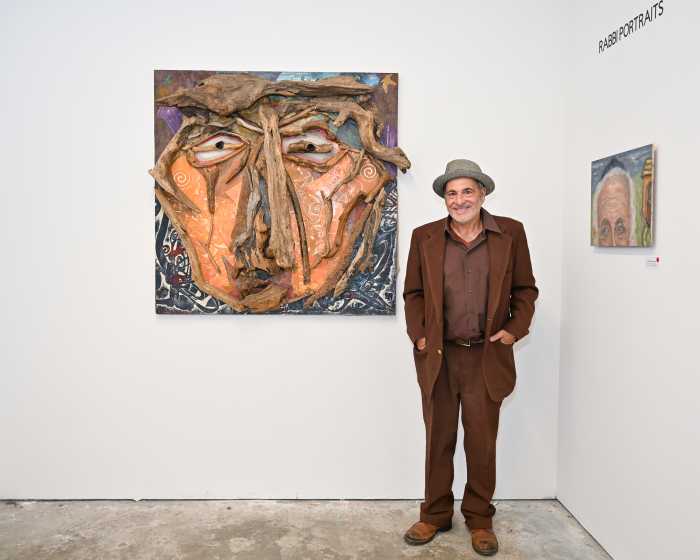By Andrew Berman
The cliche about the best of times and the worst of times may well apply to the state of preservation efforts in Greenwich Village right now. Tremendous progress has been made recently, most notably the designation of the Gansevoort Market Historic District — the first new historic district in Greenwich Village since 1969 — but ever-increasing private and institutional development pressure threatens to consume more of the historic character of the Village, East Village and Noho than ever before. With only about a third of these neighborhoods covered by historic district protections, the success or failure of current preservation struggles will undoubtedly shape the face of our neighborhoods for generations to come.
Perhaps the most immediately threatened area is the Far West Village. Though preservationists have been asking that landmark protections be extended to this area for over 30 years, virtually no progress had been made until very recently. Just since 1985, 16 high-rise buildings have gone up in the area, half in the last five years. Another five are either under construction, planned or believed to be in the pipeline. The erection of the two Richard Meier towers may have galvanized Far West Villagers more than anything else; while admired by some for their abstract modern lines, many Villagers find the Meier buildings’ scale, materials and lack of connection to the neighborhood are inappropriate and emblematic of a development boom that has little regard for the character and qualities of this historic neighborhood. Construction of a third Meier-designed tower and the announcement of a planned development on the Superior Ink site at Bethune and West Sts. have added fuel to neighbors’ concerns that scale and historic character of this neighborhood may soon be irreversibly gone.
The good news, however, is that Villagers have been organizing around this issue like no one has seen in many, many years. Over 400 attended a Town Hall meeting sponsored by the Greenwich Village Society for Historic Preservation and other West Village groups, joining the campaign to Save The Far West Village From Overdevelopment by pushing for landmark protections for historic structures and zoning changes to rein in the scale of new development. In very little time the campaign has gotten the ear of City Hall, and the city’s willingness to answer the community’s call to address these issues will become clear in the coming weeks and months.
An important factor buoying the Far West Village effort has been the recent success of the Save Gansevoort Market effort. While building upon 30 years of advocacy by at least two generations of preservationists, G.V.S.H.P.’s Save Gansevoort Market project, founded by Jo Hamilton and Florent Morellet in 2000, secured historic district designation for a substantial chunk of the Meatpacking District in record time — just three years. This seemed to bring crashing down the glass ceiling Village preservation efforts had encountered since the enactment of the Greenwich Village Historic District in 1969, which covered much but not all of the West Village and the Central Village north of Washington Sq. In all that time, in spite of repeated efforts, no historic district designations were extended in Greenwich Village, and only two individual landmarks were designated. However, this new district came just in the nick of time, as development pressure had already begun to tear away at the fabric of this unique, venerable neighborhood, most notably in the form of the new Hotel Gansevoort, whose shiny metal exterior is the antithesis in many ways of Gansevoort Market’s humble brick forms.
However, the preservation story in Gansevoort Market doesn’t end there — designation does not prevent new development, it merely provides a process, administered by the Landmarks Preservation Commission, for approving or rejecting proposed changes in a district.
VIGILANCE IS NEEDED
Vigilance and effort are needed to deal with the constant stream of violations of landmarks law that one finds in Gansevoort Market and elsewhere. With only one inspector for the entire city, the L.P.C. is not combing the city looking for illegal alterations or demolitions; that is why G.V.S.H.P. has established a “Preservation Watch” program through our Web site (www.gvshp.org) to facilitate reporting of landmarks violations when residents see them. Destruction of historic features of buildings, if not caught in time, can be irreversible. G.V.S.H.P. and Save Gansevoort Market have reported more than a dozen serious landmarks violations in Greenwich Village in the last year, many called to our attention by residents; this type of alertness is necessary to ensure that the landmarks protections we fought so hard for are observed and enforced.
In another victory by Save Gansevoort Market, in early 2003 we defeated an attempt by a developer to get a variance to build a 450-ft.-tall residential high-rise in the manufacturing-only Meatpacking District at 848 Washington St., at 13th St. However, the developer then secretly went to the Department of Buildings and got a ruling that would allow him to build a residential high-rise as of right in this manufacturing zone, by calling it a hotel and making sure that 51 percent of the building’s units are short-term stay hotel rooms. This unprecedented and legally dubious end run around the law would have endangered businesses in manufacturing zones throughout the city and have led to the destruction of the meatpacking business and many other colorful commercial uses in Gansevoort Market. Experience has shown that the introduction of residential development in manufacturing areas means that long-standing businesses get forced out. Allowing residential development in the Meat Market would also have encouraged new high-rise residential construction in manufacturing zones scattered throughout the Far West Village. The fantastic news is that the city just reversed the ruling, which will insure that this inappropriate residential development will not take place.
So G.V.S.H.P. and Save Gansevoort Market have waged a citywide campaign to get the mayor to overturn this dangerous ruling before it is too late. And not only have Villagers and our elected officials joined this effort, but we have made allies among community groups and elected officials in the other boroughs and among unions and manufacturing advocates who are concerned about the impact this ruling could have.
In the South Village, a foundation is being built for the effort that will be necessary to secure historic district designation for this unprotected and endangered area. Forming about 30 blocks south of Fourth St. between LaGuardia Pl. and Seventh Ave. S., the South Village is an area of great historic merit and an increasing amount of development pressure. This entire area was left out of the Greenwich Village Historic District when designated in 1969, and for many years was the main area of expansion and growth for N.Y.U. This created increasing conflict with the community, culminating in the destruction of several historic properties for the construction of the enormous N.Y.U. Kimmel Center and Law School in 2002 and 2003.
There is reason to hope this will change, however. A coalition of community groups, including N.Y.U., has formed to work with G.V.S.H.P. on advocating for historic district designation in the area. G.V.S.H.P. received a grant from Preserve New York to commission an architectural historian to do a study of the entire area, and work with us to propose a historic district designation to the city. We expect this to be completed in late 2004/early 2005. Meanwhile, G.V.S.H.P. has established a “Virtual Tour of the Historic South Village” on our Web site (www.gvshp.org) to help build interest in the area and support for the landmarking effort. The rich history of the area — as an early merchant’s district, then an immigrant community and then a center of counter-cultural, musical and theatrical innovation — calls out for recognition and preservation, as do the evocative but all-too-often overlooked working-class tenements, row houses, converted stables, lofts and theaters that make up the fabric of the South Village.
HOPEFUL SIGNS
One area of tangible preservation progress in the South Village is Landmarks’ recent agreement to hear a proposal to landmark three of the oldest houses in the Village, at 127, 129 and 131 MacDougal Sts. These houses are part of a study of more than 150 surviving non-landmarked Federal (1790-1835) row houses in Lower Manhattan. Nos. 127-131 MacDougal are also among 13 such houses G.V.S.H.P. and the New York Landmarks Conservancy presented to L.P.C. in 2002 as a representative sample from among the 150, with the hopes L.P.C. would begin to consider protecting this invaluable class of buildings. Greater urgency came to these three houses, however, because of their location next to so much N.Y.U. development on Washington Sq. S., and their adjacency to the N.Y.U.-owned Provincetown Playhouse. Together, they could have made a large development site (N.Y.U. even explored purchasing one in 2002), but landmarking, if successful, will protect them from this fate.
G.V.S.H.P. and East Village groups have been exploring ways to protect the unique and desirable scale and historic fabric and character of that neighborhood too. Here as elsewhere, institutional and private development threatens to overwhelm the neighborhood’s character and landmarks, as the N.Y.U. dorms on Third Ave. or the new N.Y.U. dorm on Second St. and Bowery illustrate. Landmarking of historic buildings and zoning changes to protect the scale and makeup of the neighborhood are tools being explored by G.V.S.H.P. and others to preserve the East Village.
At the same time, Noho continues to struggle to get the city to make good on a 1999 promise to come back and look at the remainder of the historic neighborhood left out of the Noho Historic District designation. A proposal to rezone the area to allow N.Y.U. to locate there, along with other potential rezoning plans, means the fate of this historic area is up in the air, though community leaders are working hard to ensure the neighborhood’s character is preserved.
The movement to reform zoning regulations around “community facilities” to prevent institutional overdevelopment also makes great strides while battling against great odds. G.V.S.H.P. has helped form a citywide coalition of over 125 groups working to reform the system that currently grants large bonuses to entities like N.Y.U. in their building projects, allowing them to build grossly out-of-scale structures as of right, such as the Kimmel Center. N.Y.U. has announced their intention of building a large new building on the supermarket site at LaGuardia Pl. and Bleecker St., though the particulars remain to be seen; there are many questions about what can be built on this former urban renewal site, and an effort to secure landmark status for the I.M. Pei-designed Silver Towers complex (strongly supported by G.V.S.H.P. and many of the complex’s residents) and its surrounding superblock could impact this planned development plan as well.
The battles are being waged on many fronts, because the sources of threats are many. But the tools and the methods we are using to achieve our goals are also varied, and getting us greater results than we have seen in some time. We’ve got a long way to go, but we’ve come a long way of late too.
Berman is executive director of Greenwich Village Society for Historic Preservation and Save Gansevoort Market.












